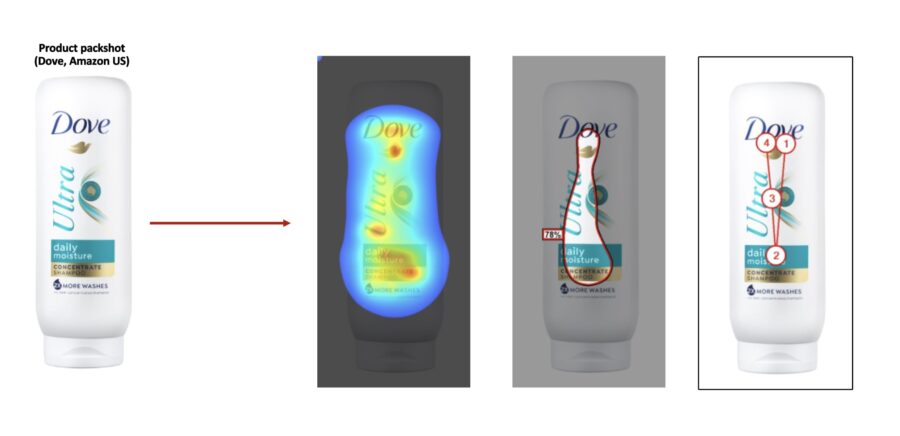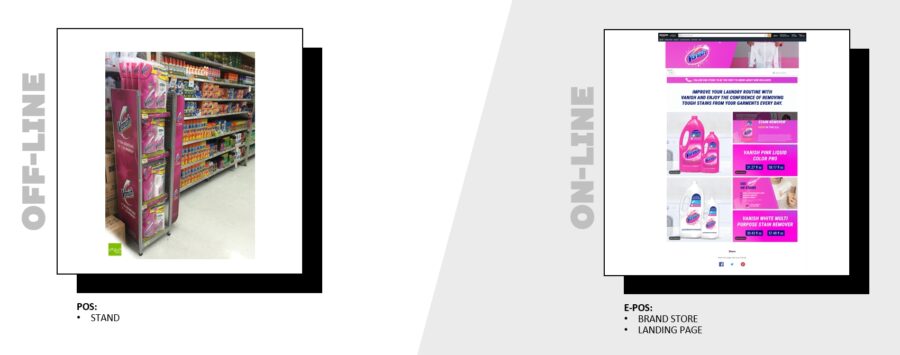Introducing our e-commerce brand management business, and key e-commerce trends for 2024
We are proud to share the news of the launch of our in-house e-commerce brand management business with two senior hires.
Agnieszka Mioduszewska joins us as Global Ecommerce Digital Branding Director from Dentsu International, and Michal Cortez joins as Global eCommerce Strategy Director from his own consultancy eMC2.
The moves come as a result of Dragon Rouge’s ambitious global growth objectives as we strengthen our end-to-end brand development offer and deepen our key client engagements.
With nearly 60% of all retail growth through mid-decade predicted to come from e-commerce, and online shopping predicted to be responsible for 27% of all sales by 2026, we have identified the need to offer an e-commerce strategy and design service in order deliver the most relevant solutions for our clients’ needs.
The launch reflects the growing role of e-commerce in our clients’ activity, and also benefits from our deep understanding of consumers at point of sale, as well as our unique position as branding partner, managing brand design across all touchpoints and having access to clients at the earliest stage of brand building.
Dragon Rouge has been active in the e-commerce space through its work for global businesses such as Unilever, Reckitt, Nestlé Purina and InPost. Our e-commerce brand management capabilities will cover both e-commerce consulting (e-commerce research and strategy) and e-commerce content design (production and implementation) across D2C sites, e-retailers platforms and marketplaces.
Mioduszewska brings over 10+ years’ experience in e-commerce both client side as E-commerce Manager at L’Oreal,, and recently as Head of E-commerce operations at Dentsu International. Additionally, she contributed to the creation of the successful beauty start-up Phenicoptere (GLOV brand) and has developed her expertise at technology giant Microsoft.
Cortez brings over 15 years’ experience in e-commerce, in senior strategic positions in both international agencies, as Strategy Lead in Saatchi & Saatchi IS (Publicis Groupe), eCommerce Director in Isobar (Dentsu) and Managing Partner, Global eCommerce Strategy Director of Molecular BBDO (Omnicom), amongst others.
Renaud Deschamps, CEO of Dragon Rouge group said:
“People shop seamlessly between physical stores and online. Brands need to stop thinking in silo and should be able to turn to their branding agency in order to have a more cohesive approach to selling their products”
3 things to look out for in e-commerce in 2024
Our e-commerce team has been looking at the year ahead. Here are some of the key themes they see playing a big part in 2024.
Addressing consumers’ needs with AI

In the world of e-commerce, AI will continue to reshape how businesses connect with consumers, weaving together personalised recommendations, dynamic pricing, and real-time chatbot assistance for a more seamless shopping experience.
AI emerges as a valuable companion in addressing a critical question: “Does your current e-commerce product content properly addresses your consumers’ needs?”
Could it be enriched? Are you missing something important? What does it look like from a conversion rate optimisation standpoint?”
Ensuring that implemented assets are always up-to-date and optimised is a no-brainer, and there are a variety of methods to evaluate it, both quantitative and qualitative (e.g. clicks maps, visitor recording, remote user testing and surveys, and split testing).
However, it’s time we take advantage of what AI-powered tools have to offer.
Imagine that instead of paying for a typical piece of research on eye-tracking, you could get similar results within a day. Take your mobile-optimised packshot, key visual, product packaging or any other digital asset, and predict what viewers will see at first glance with 92% accuracy. Is the logo or brand claim visible enough? What elements of your key visual stand out? You can test, refine and use these results with confidence. And it’s just one of the AI-based methods we use to evaluate different brand assets!
Hacking eRetailers’ product content limitations

We’re all part of a visual culture; we don’t have time to read long, unformatted blocks of plain text. Images are easier and faster to consume, and enable brands to provide key information in a more effective way. However, while Amazon offers so called A+ / A++ Premium enhanced content on a product detail page, many other platforms and eRetailers force you to focus only on plain-text product descriptions and images/packshots within the product gallery.
Additionally, shoppers do not usually scroll the product detail page and can miss some important information which you put below the fold, within the “A+ content area”.
So how do you address these challenges and what are the options to smuggle in key, image-based, product information, despite all the limitations? Tell a product story (and sell the product) with only 6-8 so called “secondary images” placed within the default product gallery. Secondary images are additional images within a carousel on a product detail page, just next to the packshot. Their objective is to address all key consumer’s FUDs (fears, uncertainties and doubts) related to a product by providing all necessary information. Communication focuses on highlighting key product features and benefits, brand claims, how-to-use instructions, nutrition or ingredients as well as showing different usage occasions, product-in-context and lifestyle imagery.
It’s an amazing opportunity – not only for enhanced content enabled platforms like Amazon, but particularly for specialised eRetailers which do not allow for any additional content within the page. Secondary images tell shoppers the whole product story in a handful of images and these images will always appear above the fold and on mobile, along with the main image – they’re the first thing shoppers see.
Consistent CX as brand differentiator

In the competitive landscape of today, establishing a consistent brand experience stands out as a powerful differentiator for businesses. By seamlessly aligning brand assets across offline and online channels, companies create a distinct and memorable identity that sets them apart from the crowd. This uniformity not only reinforces brand recognition but also builds trust and loyalty among customers, who have come to expect a reliable and coherent experience at every interaction point.
Consistently monitoring brand experience across touchpoints involves establishing clear brand guidelines both for offline & online content production, utilising analytics tools to track performance, conducting regular audits of content & UX, and fostering collaboration between marketing teams.
It’s essential to avoid siloed approaches in brand strategy, bridging the gap between e-commerce and offline initiatives. The complexity often arises when for example, you are looking to develop a strategy for how a rebranded product can differentiate itself on physical shelves versus competitors and optimise its presentation on online marketplaces. A consistent customer experience becomes a strategic advantage, enhancing customer satisfaction, fostering long-term relationships, and ultimately contributing to a brand’s sustained success.
For more information, please contact Agnieszka Mioduszewska, Global e-commerce Digital Branding Director at Dragon Rouge on :
a.mioduszewska@dragonrouge.com / T: +48 578 283 555